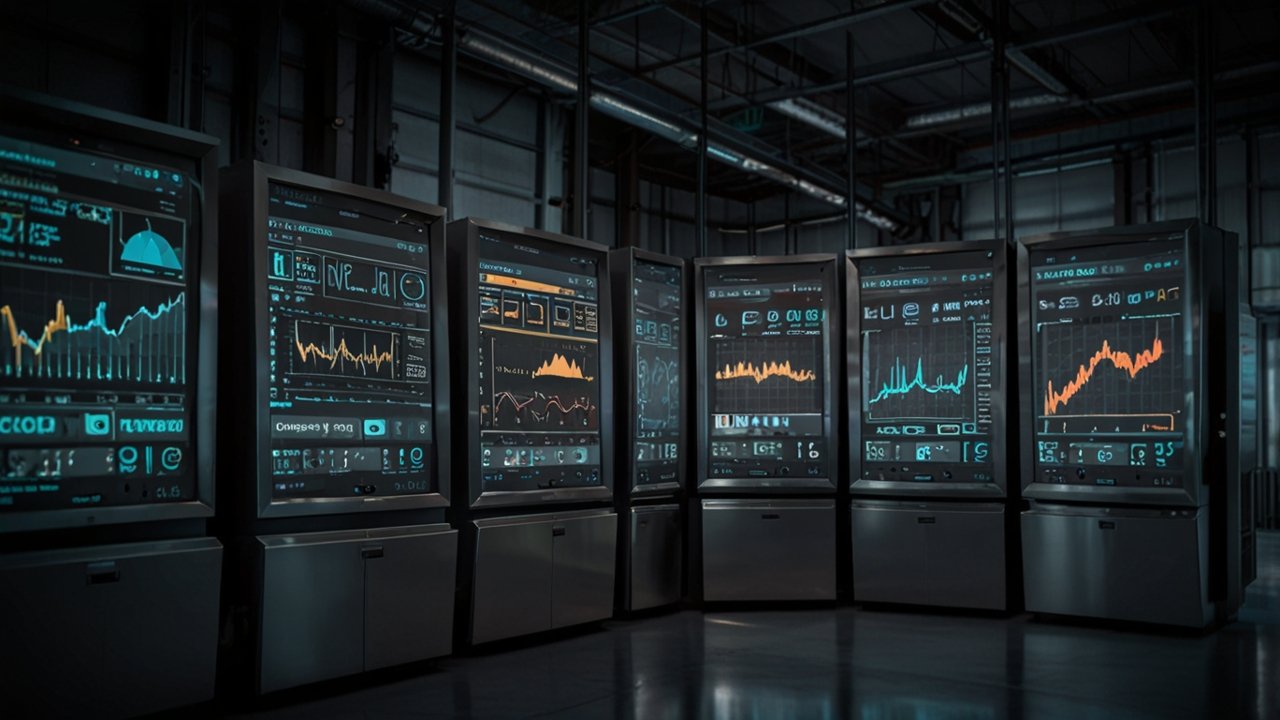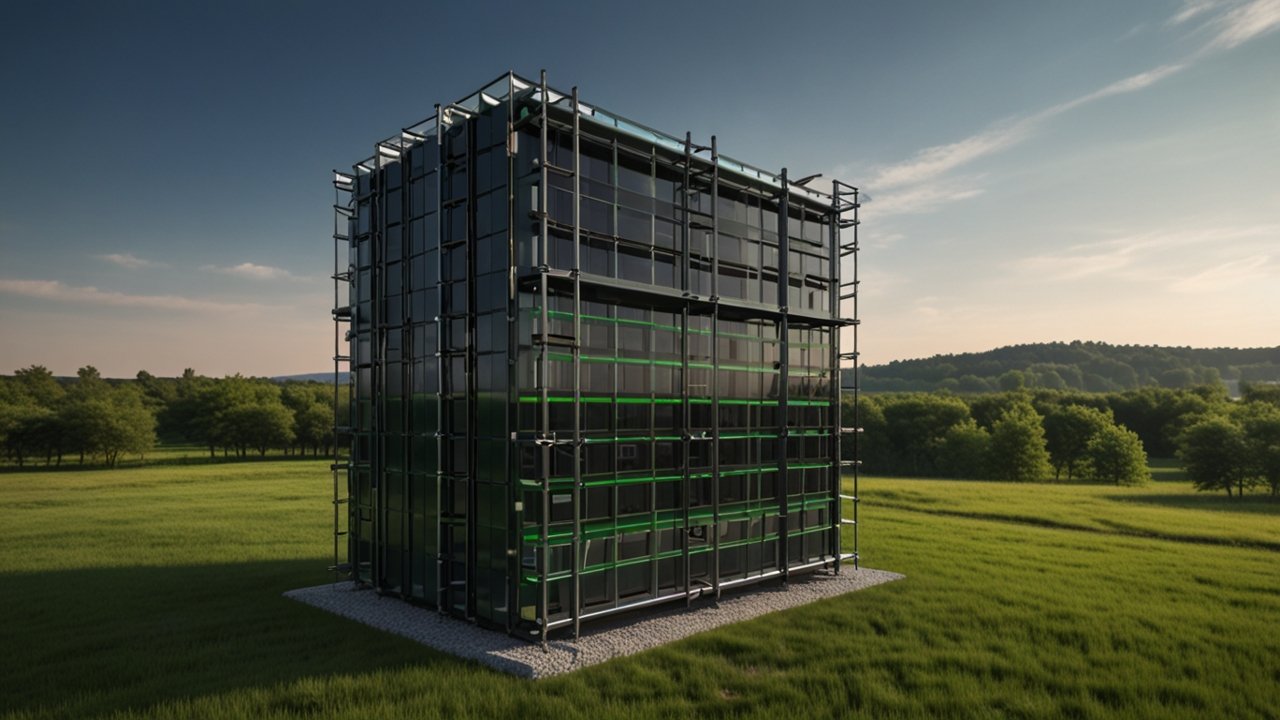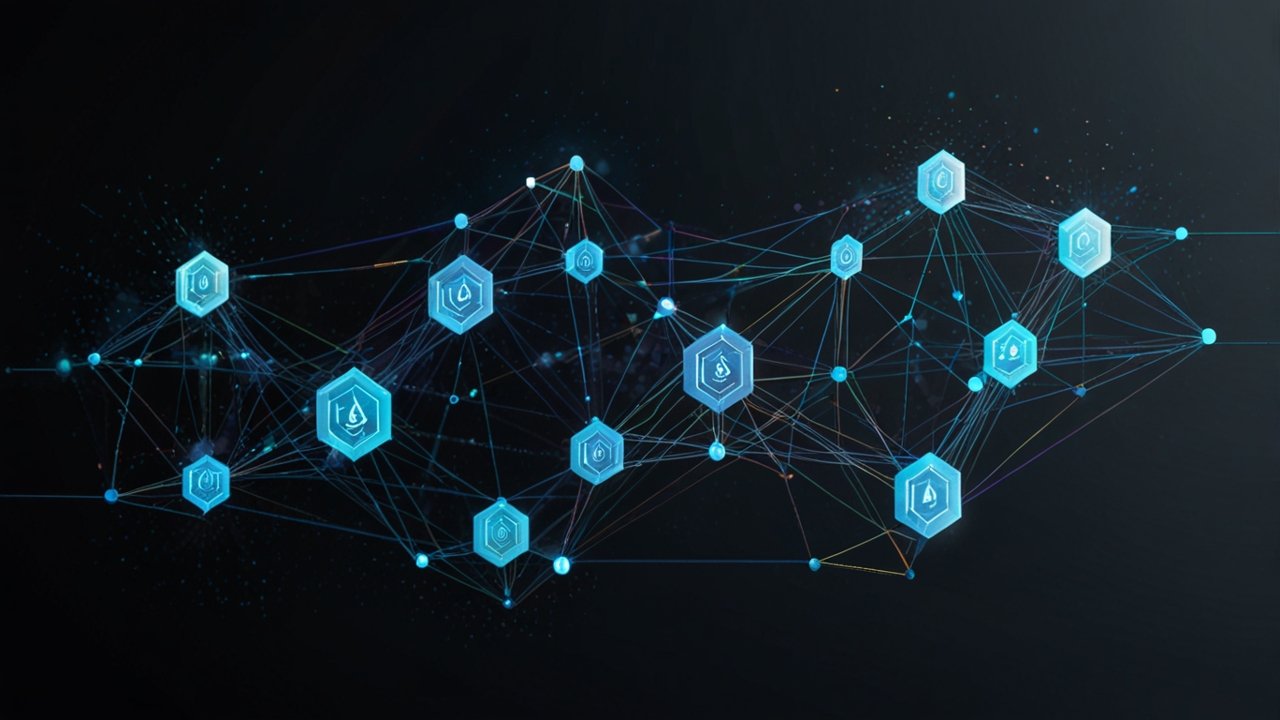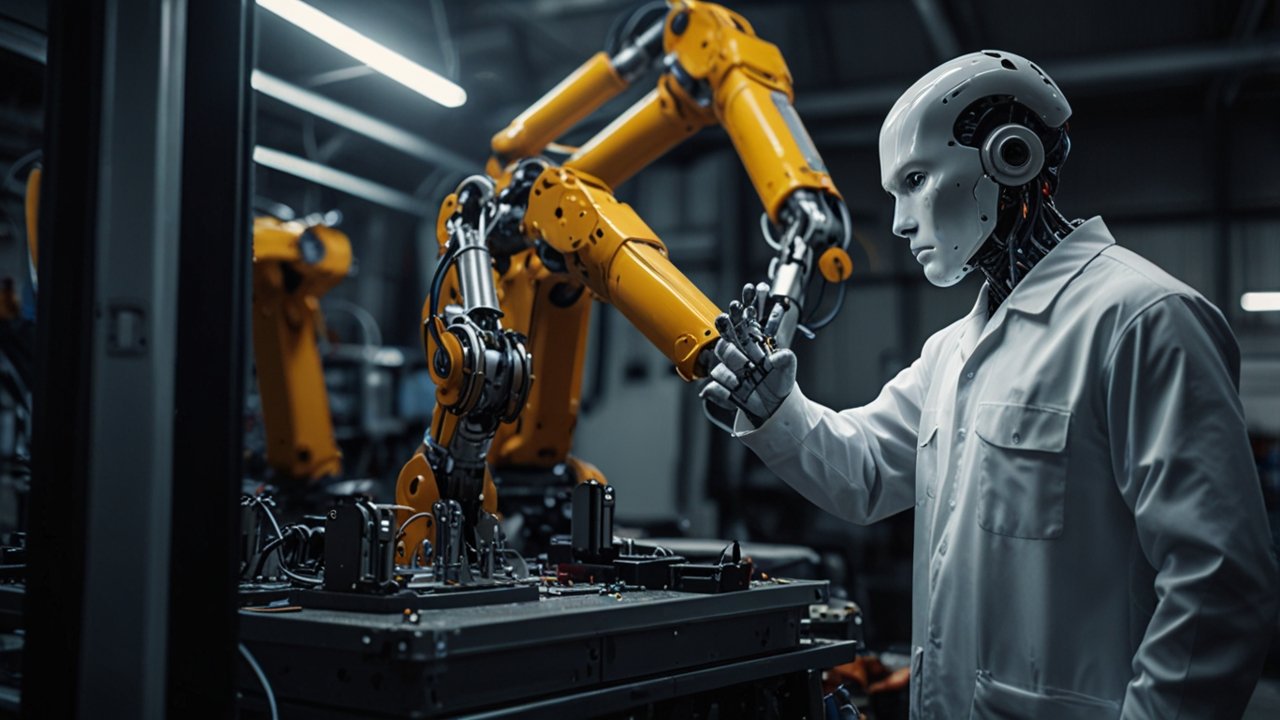📑 Table of Contents
Sustainable Data Centers: 8 Revolutionary Innovations
Sustainable Data Centers reduce environmental impact through green computing practices and energy-efficient infrastructure that support carbon-neutral technology operations. This comprehensive analysis reveals 8 environmental innovations: 1) Renewable energy integration, 2) Advanced cooling systems, 3) Server efficiency optimization, 4) Waste heat recovery, 5) Carbon offset programs, 6) Water conservation technologies, 7) Modular design approaches, 8) Circular economy practices.
According to the International Energy Agency (IEA), global data centers currently consume between 1-4.4% of worldwide electricity—a figure projected to reach 12% by 2028 without sustainable practices. Leading sustainable data centers achieve Power Usage Effectiveness (PUE) as low as 1.2, compared to the industry average of 1.5-2.0.
Suistainable Data Centers with renewable energy integration and eco-friendly infrastructure systems.
🌱 Introduction to Sustainable Data Centers
What Are Sustainable Data Centers?
Sustainable Data Centers represent a fundamental shift in how we approach digital infrastructure. Modern facilities have evolved from simple computing hubs into sophisticated operations designed to handle vast amounts of information while incorporating principles of resource efficiency and environmental stewardship.
At the heart of this transformation lies careful management of power consumption. Google’s data centers consistently achieve PUE metrics as low as 1.10, meaning only 10% energy overhead beyond computing loads. This exceptional efficiency stems from:
- AI-driven optimization systems that reduce cooling energy by 40%
- Renewable energy procurement matching 100% of annual consumption
- Advanced cooling technologies including liquid and immersion cooling
- Waste heat recovery systems enabling 50% energy reuse
The integration of innovative technologies is playing a transformative role in reshaping the digital landscape across the globe, demonstrating that environmental responsibility and technological excellence can coexist harmoniously.
Why Sustainable Data Centers Matter in 2025
Sustainable Data Centers address an urgent need for environmentally responsible infrastructure in our increasingly digitized world. As global digitalization accelerates, energy demands soar alongside our environmental footprint.
A recent Google Environmental Report noted that in 2024, data centers produced 140.7 megatons of CO₂—an immense figure that would require 6.4 gigatons of trees to offset completely. This stark reality underscores why sustainable data centers are essential.
Key statistics highlighting the importance:
- Energy consumption: Data centers use 1-4.4% of global electricity (IEA)
- Water usage: Traditional facilities consume 1.8L per kWh vs. 0.2L for optimized centers
- Carbon emissions: Industry produces 200+ megatons CO₂ annually
- Growth projection: Energy demand expected to triple by 2028
Leading organizations demonstrate that energy efficiency and profitability are not mutually exclusive. They reinforce each other through reduced operational costs and enhanced corporate reputation in an increasingly environmentally conscious marketplace.
📜 Evolution and History of Sustainable Data Centers
From Legacy Systems to Green Computing
Sustainable Data Centers emerged from facilities initially developed to support basic computing needs with emphasis solely on uptime and performance. In the late 20th century, these infrastructures served as hubs for processing and storage without significant consideration for energy consumption or environmental impact.
The digital revolution of the early 2000s prompted a fundamental re-evaluation of design philosophies. Environmental impacts came to the forefront with widespread internet adoption, cloud computing, and artificial intelligence applications. This awareness led to green computing—an industry-wide shift toward designing IT infrastructure that is both resource-efficient and cost-effective.
According to MIT Technology Review, significant milestones include:
- 2007: Google launches public sustainability initiatives
- 2010: Industry adoption of PUE and WUE metrics
- 2015: Paris Agreement accelerates corporate commitments
- 2020: AI-driven energy management becomes standard
- 2025: Carbon-neutral operations emerge as industry norm
The transition from legacy data centers consuming 2.0+ PUE ratings to modern sustainable data centers achieving 1.2 or lower represents one of the most significant environmental leaps in technology history. Explore more about technology transformation trends.
Regional Innovations in Sustainable Infrastructure
Sustainable Data Centers deployment shows notable regional differences influenced by climate conditions, regulatory frameworks, and economic priorities.
Scandinavia: The cold climate provides natural advantages for free-air cooling and district heating systems. Nordic facilities often report some of the lowest PUE ratings globally due to environmental synergies combined with aggressive renewable energy adoption policies. Microsoft’s underwater data center off Scotland demonstrated radical innovation potential.
Asia-Pacific: Regions like Singapore and Japan have become testbeds for cutting-edge innovations such as immersion cooling—where servers are submerged in non-conductive liquids for maximum heat dissipation efficiency.
North America & Europe: Focus on large-scale renewable energy procurement combined with carbon offset programs, reflecting regulatory pressures and corporate sustainability commitments through initiatives like the U.S. Data Center Optimization Initiative (DCOI).
These regional strategies demonstrate diverse pathways toward shared sustainability goals. Learn more about future technologies shaping global infrastructure.
💡 How Digital Transformation Enhances Sustainable Data Centers
AI-Driven Energy Management Systems
Sustainable Data Centers increasingly leverage artificial intelligence to optimize energy consumption dynamically. Modern AI systems continuously analyze workload patterns, predict demand fluctuations, and automatically adjust cooling, power distribution, and server utilization to minimize waste.
Google’s DeepMind AI reduced cooling energy consumption by up to 40% through intelligent management algorithms that learn from historical patterns and environmental conditions. This breakthrough demonstrates the power of machine learning in achieving unprecedented efficiency levels.
Key benefits of AI-driven management:
- Real-time optimization: Adjust operations across thousands of variables simultaneously
- Predictive maintenance: Identify equipment failures before they occur
- Renewable integration: Schedule workloads when solar/wind energy is abundant
- Dynamic cooling: Optimize HVAC systems based on actual server temperatures
- Load balancing: Distribute computing tasks for maximum efficiency
These systems represent a paradigm shift from static infrastructure management to adaptive, intelligent operations. The technology also enables predictive maintenance, preventing energy waste from malfunctioning systems while extending hardware lifecycles.
Advanced Monitoring and IoT Integration
Sustainable Data Centers employ sophisticated monitoring infrastructures that track thousands of metrics across facility operations—from individual server temperatures to aggregate power consumption patterns. These systems provide unprecedented visibility into energy flows, enabling operators to identify inefficiencies and optimize performance continuously.
Real-time dashboards display:
- PUE metrics: Power usage effectiveness tracking
- Carbon intensity scores: Emissions per computing unit
- Water usage data (WUE): Liters consumed per kWh
- Temperature mapping: Thermal distribution across facilities
- Renewable energy percentage: Clean energy utilization rates
Automation extends beyond monitoring to encompass entire operational workflows. According to AWS Sustainability, modern facilities automatically adjust cooling systems based on server loads, shift workloads to times when renewable energy is abundant, and manage backup power systems to minimize reliance on fossil fuel generators.
The integration of Internet of Things (IoT) sensors throughout facilities creates comprehensive digital twins—virtual replicas that model physical operations in real-time. Engineers can simulate changes, test optimization strategies, and predict outcomes before implementing modifications in the physical infrastructure.
⚡ Energy-Efficient Infrastructure Systems
Renewable Energy Integration Strategies
Sustainable Data Centers increasingly source electricity from renewable energy installations such as solar farms, wind turbines, and hydroelectric facilities. Leading technology companies have invested billions in renewable energy procurement agreements.
Corporate Renewable Energy Commitments:
- Google: Achieved 100% renewable energy matching for global operations
- Microsoft: Committed to becoming carbon negative by 2030
- Amazon: Pledged carbon neutrality by 2040
- Apple: Already carbon neutral across operations
- Meta: 100% renewable energy for data centers since 2020
On-site renewable generation represents another frontier, with facilities installing solar panels on rooftops and surrounding land. While on-site generation typically covers only a fraction of total energy needs, it provides immediate carbon reduction and demonstrates commitment to sustainability.
Power Purchase Agreements (PPAs) allow sustainable data centers to support renewable energy development even when direct physical connection isn’t feasible. Through these financial instruments, facilities fund new renewable capacity that feeds into regional grids, offsetting their consumption with equivalent clean energy generation elsewhere.
This approach has become instrumental in corporate sustainability strategies, enabling meaningful environmental impact at scale. Learn more about green technology innovations.
Advanced Cooling Technologies
Sustainable Data Centers employ diverse cooling strategies optimized for local conditions and facility requirements. According to the EPA Green Power Partnership, cooling represents 30-40% of total data center energy consumption, making it a critical optimization target.
Modern Cooling Technologies:
- Liquid Cooling Systems
• Circulate coolant directly to server components
• Achieve heat removal efficiencies far exceeding traditional air cooling
• Enable higher computing density configurations
• Reduce energy consumption by up to 30% - Immersion Cooling
• Submerge entire servers in dielectric fluids
• Enable ultra-dense computing configurations
• Minimize energy for fans and air handlers
• Increase hardware lifespan through stable temperatures - Free-Air Cooling
• Leverage ambient outdoor air when temperatures permit
• Dramatically reduce mechanical cooling requirements
• Facilities achieve 90%+ free cooling hours annually
• Particularly effective in cooler climates - Evaporative Cooling
• Use water evaporation to reduce air temperatures
• Energy-efficient alternative to mechanical systems
• Requires careful water management strategies
• Effective in dry climates with low humidity
Waste heat recovery transforms sustainable data centers from energy consumers into potential energy providers. Captured heat can warm nearby buildings through district heating systems, heat greenhouses, or support industrial processes requiring thermal energy.
Nordic facilities excel at these integrations, with some data centers providing heating for entire neighborhoods. This circular approach maximizes resource utilization while creating symbiotic relationships between digital infrastructure and surrounding communities. Explore more about smart cities integration.
🌍 Real-World Case Studies
Google’s Industry-Leading Sustainability Model
Google operates one of the world’s most sustainable data center networks, achieving carbon neutrality since 2007 and matching 100% of annual electricity consumption with renewable energy purchases since 2017.
Google’s Sustainability Achievements:
- PUE Leadership: Average PUE of 1.10 across global facilities
- AI Optimization: 40% reduction in cooling energy through DeepMind
- 24/7 Carbon-Free Energy: Going beyond annual matching to hourly clean energy
- 8+ Gigawatts: Contracted renewable energy capacity
- Water Efficiency: 90% less water usage than typical facilities
Their facilities consistently achieve PUE ratings among industry leaders, with some locations operating below 1.1 PUE—meaning only 10% energy overhead beyond computing loads themselves. This exceptional efficiency results from continuous innovation in cooling systems, AI-driven optimization, and custom hardware design.
Google has also pioneered 24/7 carbon-free energy matching, going beyond annual renewable procurement to ensure clean energy powers operations every hour of every day. This ambitious goal requires sophisticated load shifting, battery storage integration, and coordination with renewable generators.
The company invests heavily in renewable energy projects globally, having contracted over 8 gigawatts of renewable energy capacity—making them one of the world’s largest corporate renewable energy buyers. Learn more about tech innovations driving sustainability.
Microsoft’s Project Natick: Underwater Innovation
Microsoft’s Project Natick explored radical alternatives to traditional data center design through underwater deployment. The experimental facility operated on the seafloor off Scotland’s Orkney Islands, powered entirely by renewable energy from local wind and wave sources.
Project Natick Key Findings:
- 8x Lower Failure Rate: Underwater environment reduces hardware failures
- 100% Renewable Power: Direct connection to offshore wind farms
- Natural Cooling: Seawater eliminates conventional HVAC systems
- Stable Environment: Free from oxygen, humidity, and temperature fluctuations
- Extended Hardware Life: Controlled atmosphere increases component longevity
The underwater environment provided consistent cooling through surrounding seawater, eliminating conventional cooling infrastructure entirely while achieving remarkably stable operating conditions. Results exceeded expectations across multiple metrics.
While commercial underwater data centers remain speculative, Project Natick demonstrated innovative thinking about sustainable infrastructure. The project highlighted opportunities to leverage natural environmental features for cooling, co-locate facilities with renewable energy sources like offshore wind farms, and rethink traditional assumptions about optimal data center locations.
Nordic Region: Global Sustainability Leaders
Scandinavian countries have emerged as global leaders in sustainable data center operations, leveraging cold climates, abundant renewable energy, and progressive environmental policies. Facilities in Sweden, Finland, Norway, and Iceland routinely achieve PUE ratings below 1.2 while sourcing nearly 100% renewable electricity.
Nordic Advantages:
- Natural Cooling: Cold temperatures enable extensive free-air cooling
- Renewable Energy: Abundant hydroelectric, wind, and geothermal sources
- District Heating: Waste heat warms residential buildings
- Political Stability: Transparent governance attracts investment
- Low Carbon Grid: National electricity mix already low-emission
District heating integration represents a uniquely Nordic innovation, where data center waste heat warms residential and commercial buildings through municipal heating networks. Facilities in Stockholm and Helsinki provide substantial heating capacity to surrounding neighborhoods, transforming what would be wasted energy into valuable community resources.
According to Nordic Council, this circular approach epitomizes sustainable design principles by maximizing resource utilization across interconnected systems. The region’s success stems from synergistic factors that create an ideal environment for sustainable data centers.
As global data traffic continues growing, the Nordic model offers a proven blueprint for sustainable digital infrastructure that balances economic development with environmental responsibility. Discover more about emerging trends in sustainable infrastructure.
♻️ Eco-Friendly Technology Solutions
Water Conservation and Recycling Systems
Sustainable Data Centers implement comprehensive water management strategies addressing both consumption reduction and quality protection. Advanced cooling technologies dramatically decrease water usage compared to traditional evaporative systems.
Water Efficiency Metrics:
- Google’s Data Centers: Use 90% less water than typical facilities
- Industry Average WUE: 1.8 liters per kilowatt-hour
- Optimized Facilities WUE: Below 0.2 liters per kilowatt-hour
- Water Savings: Up to 80% reduction through closed-loop systems
Water Conservation Technologies:
- Closed-Loop Cooling: Recirculate coolant within sealed systems, minimize freshwater consumption
- Greywater Recycling: Capture and treat wastewater for reuse, significantly reduce freshwater demand
- Rainwater Harvesting: Collect precipitation for cooling applications, minimize municipal water supply dependence
- Air-Side Economizers: Eliminate water-based cooling when possible, achieve 90%+ free cooling hours
According to the UN Environment Programme, water scarcity intensifies globally due to climate change and population growth, making water-efficient data center design increasingly critical for environmental and social sustainability.
Circular Economy and E-Waste Management
Sustainable Data Centers embrace circular economy principles through aggressive hardware lifecycle extension, refurbishment programs, and responsible end-of-life processing.
Circular Economy Practices:
- Hardware Lifecycle Extension: Maximize serviceable life of computing equipment
- Component Refurbishment: Repair and upgrade individual parts rather than replacing entire systems
- Equipment Donation: Provide functional hardware to educational institutions and nonprofits
- Material Recovery: Extract valuable materials from end-of-life equipment
- Certified Recycling: Ensure proper handling of hazardous materials
Rather than discarding functional equipment during upgrade cycles, facilities increasingly donate, resell, or repurpose older hardware for less demanding applications. This approach maximizes embodied energy and material value while reducing manufacturing demand for new equipment.
Major technology companies operate extensive refurbishment programs processing millions of devices annually, diverting substantial e-waste from landfills. Apple’s recycling program has recovered over 2 billion pounds of materials through specialized robots like Daisy that disassemble iPhones.
When equipment reaches genuine end-of-life, responsible recycling ensures valuable materials like rare earth metals, precious metals, and recyclable plastics return to manufacturing supply chains rather than becoming environmental hazards.
Carbon Offset Programs and Modular Design
Sustainable Data Centers employ carbon offset programs as strategic tools for balancing the environmental impact of rapid digital growth. Companies are investing substantially in reforestation projects and renewable energy credits to neutralize their carbon emissions.
Carbon Offset Strategies:
- Verified Carbon Credits: Purchase offsets from certified environmental projects, support reforestation and conservation initiatives
- Direct Air Capture: Remove CO₂ directly from atmosphere, support emerging carbon removal technologies
- Ecosystem Restoration: Fund wetland and forest restoration, support biodiversity conservation
According to Gold Standard, Google’s comprehensive offset initiatives have resulted in 26 million tonnes of CO₂e being counteracted through verified environmental projects worldwide.
Modular design approaches allow for significant waste reduction and rapid deployment through prefabricated, scalable systems. Facilities demonstrate over 90% recycling rates through advanced modular strategies that minimize construction waste and maximize component reusability.
🔮 Future Trends: Carbon-Neutral Operations
Emerging Technologies and Predictions
Sustainable Data Centers face both challenges and opportunities as industry experts predict that energy usage may triple by 2028. This surge is largely driven by increasing demands from artificial intelligence applications, quantum computing development, and the expansion of edge computing infrastructure.
Future Technology Trends:
- Regenerative Computing: Systems designed to produce more energy than they consume
- Advanced Quantum Cooling: Ultra-efficient cooling for quantum processors
- Edge Computing Integration: Distributed facilities closer to end users
- AI-Optimized Hardware: Custom silicon designed for AI workloads
According to McKinsey, emerging technologies including regenerative computing and advanced quantum cooling are paving the way for systems designed to produce more energy than they consume.
Research from MIT Sloan Management Review indicates an overall trend toward achieving fully carbon-neutral operations, as regulatory and market pressures force sustainable practices to the forefront of strategic planning.
Overcoming Challenges: Strategic Responses
Sustainable Data Centers journey toward fully sustainable operations faces significant challenges despite promising technological advances. Rising digital demands fueled by AI-driven workloads pose risks of outpacing current efficiency measures.
Key Challenges:
- Exponential Growth: AI and machine learning driving unprecedented compute demands
- Energy Grid Constraints: Limited clean energy availability in some regions
- Water Scarcity: Cooling requirements competing with human consumption needs
- E-Waste Volume: Rapid technology obsolescence creating disposal challenges
- Cost Pressures: Balancing sustainability investments with financial performance
Strategic Industry Responses:
- Government Mandates: U.S. Data Center Optimization Initiative (DCOI), European Union Green Deal requirements
- Corporate Leadership: Voluntary commitments exceeding regulations, industry coalitions sharing best practices
- Technological Innovation: Breakthrough cooling technologies, next-generation renewable energy systems
- Financial Incentives: Green bonds funding sustainable infrastructure, tax credits for renewable energy adoption
According to World Economic Forum, overcoming these challenges requires concerted effort across multiple sectors—from technology providers to policymakers to end users.
The strategic fight for a greener digital future continues as stakeholders collaborate to secure low-carbon infrastructure that can support growing computational demands. Explore more about tech trends shaping the future of sustainable infrastructure.
❓ Frequently Asked Questions
What defines a sustainable data center?
Sustainable Data Centers are designed to reduce environmental impact through energy efficiency, resource optimization, and integration of renewable energy sources. They focus on minimizing waste, using advanced cooling systems, and implementing eco-friendly practices throughout their operations while maintaining high performance standards. Key metrics include PUE below 1.3, WUE under 0.5L/kWh, and significant renewable energy procurement.
How have data centers evolved over the years?
Sustainable Data Centers started as simple facilities for computing and storage with no environmental considerations. Over time, as environmental concerns grew with rising digital usage, they evolved to incorporate green computing practices, efficient cooling systems, renewable energy sources, and sophisticated resource management strategies that balance performance with environmental responsibility. Modern facilities achieve PUE ratings 50% lower than legacy systems.
What technologies are driving improvements in data center sustainability?
Technologies such as AI-driven monitoring systems, liquid cooling technologies, renewable energy integration including solar and wind power, and modular designs are key to improving sustainability. These enable higher efficiency, lower water usage, and reduced overall environmental impact while maintaining computational performance. Automation technologies also play a crucial role in real-time optimization.
How do renewable energy and water conservation impact operations?
Sustainable Data Centers benefit significantly from integrating renewable energy, which reduces reliance on fossil fuels and lowers carbon emissions by up to 100%. Advanced water conservation techniques such as recycled water systems and free-air cooling reduce environmental footprint by up to 90% while promoting more sustainable operation of digital infrastructure. These practices also reduce operational costs and enhance corporate reputation.
What initiatives are companies taking to become more sustainable?
Leading organizations invest in carbon offset programs, innovate with advanced cooling and energy optimization technologies, and adopt modular designs to minimize waste. Global regulations and industry initiatives further promote these sustainable practices across sectors, driving continuous improvement in environmental performance. Major tech companies have committed billions to renewable energy procurement and carbon-negative goals by 2030-2040.
✅ Conclusion: The Path to Sustainable Digital Infrastructure
Sustainable Data Centers transformation into models of efficiency and environmental stewardship signals a major step forward in our digital era. By embracing innovations from advanced cooling systems to renewable energy integration, these facilities are not only reducing their environmental footprints but also setting new industry standards that others will follow.
Key Takeaways:
- Energy Efficiency: Leading facilities achieve PUE as low as 1.10, representing 50% improvement over legacy systems
- Renewable Energy: Major tech companies have contracted 20+ gigawatts of renewable capacity
- Water Conservation: Advanced cooling technologies reduce water usage by up to 90%
- AI Optimization: Machine learning systems deliver 40% reductions in cooling energy
- Circular Economy: Hardware refurbishment programs divert millions of tons from landfills
- Carbon Neutrality: Industry leaders achieving carbon-negative operations
- District Heating: Waste heat recovery enables 50% energy reuse
- Future Innovation: Emerging technologies promise regenerative computing
The journey through eight environmental innovations demonstrates that technology and sustainability can advance together harmoniously. The real-world case studies from Google, Microsoft, and Nordic data centers prove that ambitious environmental goals are achievable at scale.
Take Action Today:
- Conduct comprehensive energy audits to identify optimization opportunities
- Invest in AI-driven monitoring and automation systems
- Procure renewable energy through PPAs or on-site generation
- Implement advanced cooling technologies appropriate for local climate
- Adopt circular economy principles for hardware lifecycle management
- Set science-based targets aligned with Paris Agreement goals
For more information on transformative technology topics, explore our articles on Tech Trends and Insights.
Have you experienced the benefits of these transformations in your work or community? Share your thoughts in the comments, and let’s continue the discussion on how sustainable data centers can shape a cleaner digital future.
Stay Updated: Subscribe to our newsletter for the latest insights on sustainable technology, green computing, and environmental innovation. Together, we can build a more sustainable digital future.




















Leave a Reply